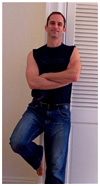For the 30 days of November, Lumina Mind Body Studios has been practicing #30daysofgratitude by reading quotes about gratitude in class and posting them on our facebook page to share with all who want to practice with us. It has been an amazing journey with very positive results.
I have been practicing yoga since 1995 and teaching since 1998. I developed a personal practice (where I didn't go to someone else's class) about 10 years after I started teaching and it was at that point that I really got to delve into the deeper offerings of yoga practice. I never had a daily practice, but I did have one that worked for me and would live my yoga even when I wasn't practicing asana.
When Laury Hammel (one of the owners of the Longfellow Health Club, the umbrella under which Lumina resides) suggested that we do 30 days of gratitude at Lumina, I thought that was a great idea, but I never imagined the impact it would have on me.
I got to work, and like anyone researching anything these days, I asked Professor Google for ideas. She supplied me with myriad quotes about gratitude by people ranging from Zig Ziglar to Alice Walker to Elie Weisel and many others. I created graphics with photos of some of our instructors (a sample shown below) to create a community feel to our expressions of gratitude. The more I designed, the more excited and full I felt. The more I wanted to share this idea with everyone around me. And then the campaign began.
What I started to notice is that I looked forward to sharing these quotes with the larger community. I would read the quotes in my yoga classes and weave them into my teaching. It set a different tone for my classes and for Savasana than I usually set, one of open-heartedness and love that sprung right out of being grateful. It was not something I planned, it happened very organically, evolving from each day's quote. Now that the 30 days has come to an end, it leaves me a bit sad and yearning to continue this practice of gratitude in my life. I have joined a gratitude circle and have started 40 days of gratitude where each day I write something for which I am grateful.
I have noticed that I am happier and more content in my life. That even when things are going wrong, or I am frustrated or sad, finding gratitude can help bring me back to center, and manage my feeling a bit better. I am spending more time feeling good within myself. I am generally an optimistic person, but I find I am even sunnier in my disposition. I have read that having a positive outlook on life can lead to a longer lifespan. This gratitude practice is something that I think will support me in that endeavor.
I am grateful for so many things in my life:
- I am grateful that I have jobs that don't feel like work.
- I am grateful for my yoga students and my acupuncture patients, all of whom trust me to guide them to feeling better in their life.
- I am grateful that I have children and family that I love (even though they can sometimes be challenging).
- I am grateful to have a support network of people that I can count on when I need them.
- I am grateful for the quiet time at home when the kids have gone off to school and I don't yet have to leave for work.
- I am grateful for my morning tea.
- I am grateful for when the warm sun shines on my face.
I could go on and on. Every moment that I am grateful, my heart opens just a little bit more.
For what are you grateful?
For all 30 (plus 1 bonus) gratitude quotes, visit www.facebook.com/luminamindbody/
Janine L. Agoglia has been teaching Vinyasa yoga since 1998. Her yoga journey started in 1995 with Iyengar Yoga and she stumbled upon Vinyasa yoga in 1997. The combination of breath with proper body alignment is what fuels Janine's practice and the classes that she teaches. She believes that yoga should be safe as well as challenging, creative and fun. She always emphasizes proper alignment within the flow, as well as focus, breath and humor to help students find the balance between strength and ease. Deepening one’s physical awareness helps one strengthen his/her spiritual awareness and mind-body connection. Janine loves being able to help people deepen their own practices, finding yoga in everyday life, on and off the mat. Her DVD, “Vinyasa Yoga for Regular People” is available for purchase at the front desk at Lumina Mind Body Studios in Wayland, MA.
In addition to being the Co-Director of Yoga and teaching yoga classes at Lumina Mind Body Studios Janine is also a Licensed Acupuncturist and Chinese Herbalist who practices at Integrative Therapeutics in Natick, MA.

















